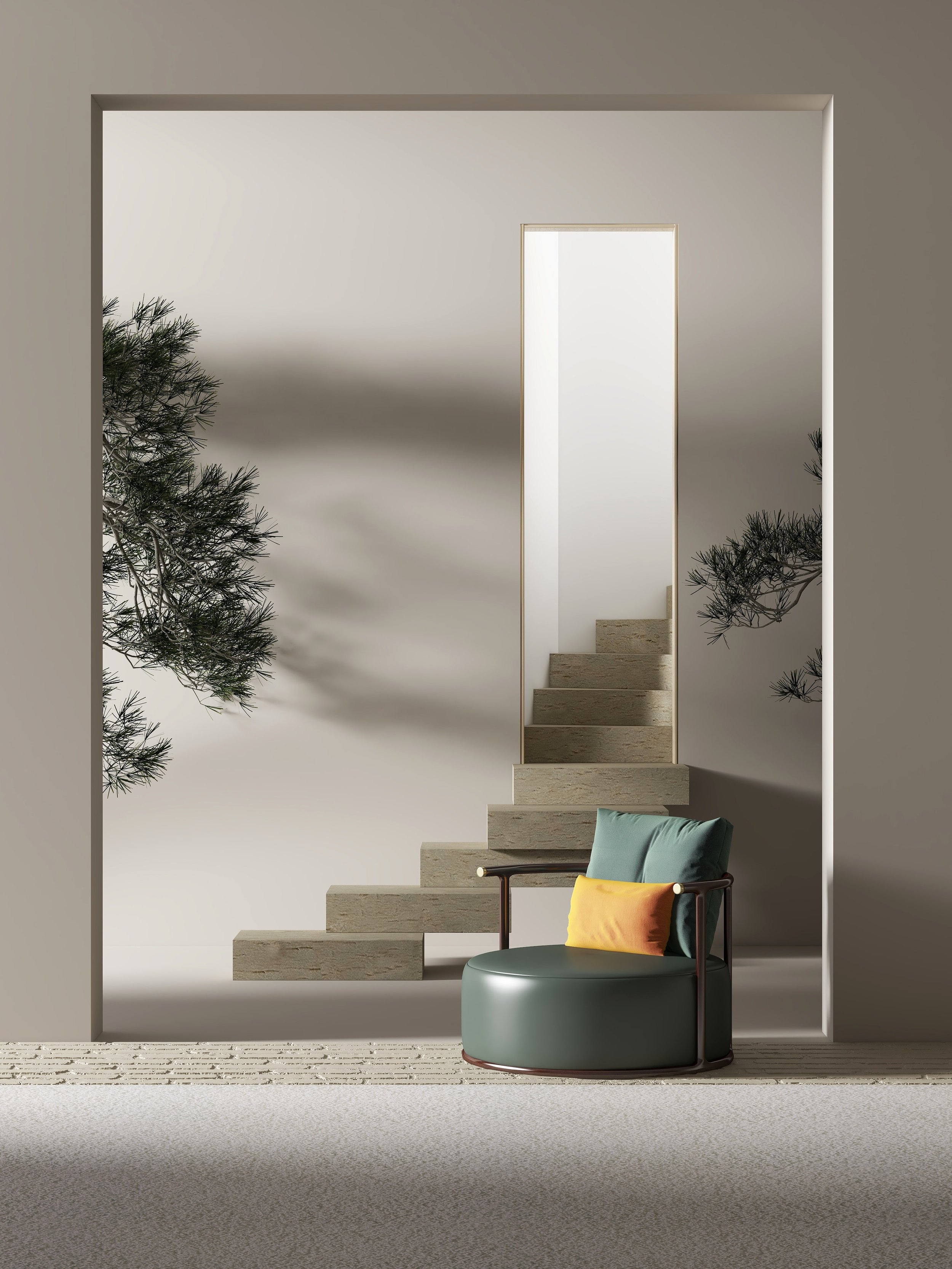The Scandinavian interior design style started in northern Europe but quickly spread worldwide. It's famous for its neutral colors and simplicity. On the other side of the globe, the Japanese also developed their distinct interior design style. Minimalism and practicality are the main ideas it tries to convey. The similarities between the two inspired a unique fusion of styles that focuses on functionality, purposefulness, and appreciation of natural materials. And thus, Japandi was born. The clean, soothing aesthetic and the mindful usage of space make it very popular in NYC apartments. Take a look at this list of Japandi design ideas to see if this style is the right fit for you.
Warm Neutral Color Palette
Both Scandinavian and Japanese interior design styles use a neutral palette of colors. However, they often differ in shade and tone. Light colors such as white and grey and typical for nordic houses. On the contrary, Japanese color palettes are typically darker and warmer, leaning more toward earth tones. The perfect fusion of those two is the main palette of Japandi: light warm neutrals. You can never go wrong with combining warm off-white walls with light browns and beiges in the furniture. If you're looking to make your place pet-friendly, try leaning towards darker but still neutral, earthy tones. It will still look just as nice and won't get dirty as quickly.
Wall Texture
A concept that comes up in many Japandi design ideas is using some sort of texture on the walls. This idea stems from Japanese interior design, where wood and bamboo paneling are very common. A good way to include this in a Japandi-themed apartment is by using thin wooden strips laid vertically on the wall. It gives the space more dimension, and it can also be used to visually separate different areas. If wooden strips are not something you like, consider shoji screens. These are screens made from wooden frames with paper panels. They're an exciting addition to any room and completely fit the overall style.
Wall panels are one of the most common Japandi design ideas via
Minimalistic approach
One of the main characteristics of Japandi is the clean and streamlined space. In order to achieve that, getting rid of all unnecessary things in your home is an absolute must. There's simply no place for furniture and pieces of decor that serve no purpose. While minimalism isn't for everyone, getting rid of some things can feel quite refreshing. If you're not ready to part with your belongings completely, you can move them to another location. Experts from consumeropinion.org suggest taking a look into a variety of services that can help you with that. Doing this will create a serene and grounded atmosphere in your Japandi home.
Natural materials
Craftsmanship appreciation is one of the key values of both Scandinavian and Japanese design styles. One of the best ways to honor this profession is by using natural materials. When looking at Japandi design ideas, you'll notice that absolutely all of them include wood in some form. Hand-crafted wooden furniture is an absolute must in a Japandi home. There are many woodwork shops in NYC and the surrounding area. Whether it's a bed or furniture for your home office, you'll almost certainly find what you're looking for. If you want to go a step further, you can get some of your wooden furniture custom-made to your liking.
Even though it's the most popular, wood is not the only natural material there is. Any other are also more than welcome in a Japandi-themed room. You can have fun with different combinations of paper, bamboo, and rattan, including natural fabrics such as linen or wool, which is also a great idea.
Wooden furniture is both good-looking and durable
Plants
Establishing a connection with nature in interior design can be tricky. However, it should be pretty straightforward if you're going for the Japandi design style. Going one step further from using natural materials is incorporating plants into your living space. If there's a balcony in your NYC home, this will be very easy for you. Even if you don't have a balcony, don't worry - you can still create your zen garden inside. The key here is to not overdo it. It's easy to get carried away when buying plants. While there is nothing inherently wrong with that, it doesn't go well with the Japandi philosophy. Instead of 10 different plants, try getting a few that make an impression. This works so much better with the ideas of simplicity and elegance you want to convey.
Well-incorporated plants can bring life to any room
Multifunctional furniture
As we already mentioned, less is more when it comes to Japandi. When you don't have many pieces of furniture, you want to ensure that the ones you own are multifunctional. This complements one of the main ideas of Japandi: everything needs to have a purpose. Of course, this doesn't work with everything: a dining chair can hardly double as storage space. Still, working around this idea is worth it, especially if you're new to more minimalistic styles. It will give you more room to adapt while maintaining the desired aesthetic.
Open-space plan
Having separate spaces for different activities can be convenient at times. However, you may want to avoid that in order to convey a true Japandi vibe in your home. Sharp walls and separations go against the free-flowing concept that is crucial to Japandi. Instead, an open space concept for the living room-dining room-kitchen area is a much better option. If you have a possibility do to so, removing structural obstacles would significantly open up the space. This will make your space seem much more luxurious and will allow a free flow of natural light and air all throughout.
Overcrowded living spaces are becoming a thing of the past. Instead, a mindful approach with an appreciation of free-flowing space and natural materials is taking over NYC. Taking the best of both Scandinavian and Japanese interior design styles and combining them offers exactly that. While there are many Japandi design ideas to choose from, they are all based on the same principles. If simplicity and functionality are something you appreciate, consider giving Japandi a shot.





